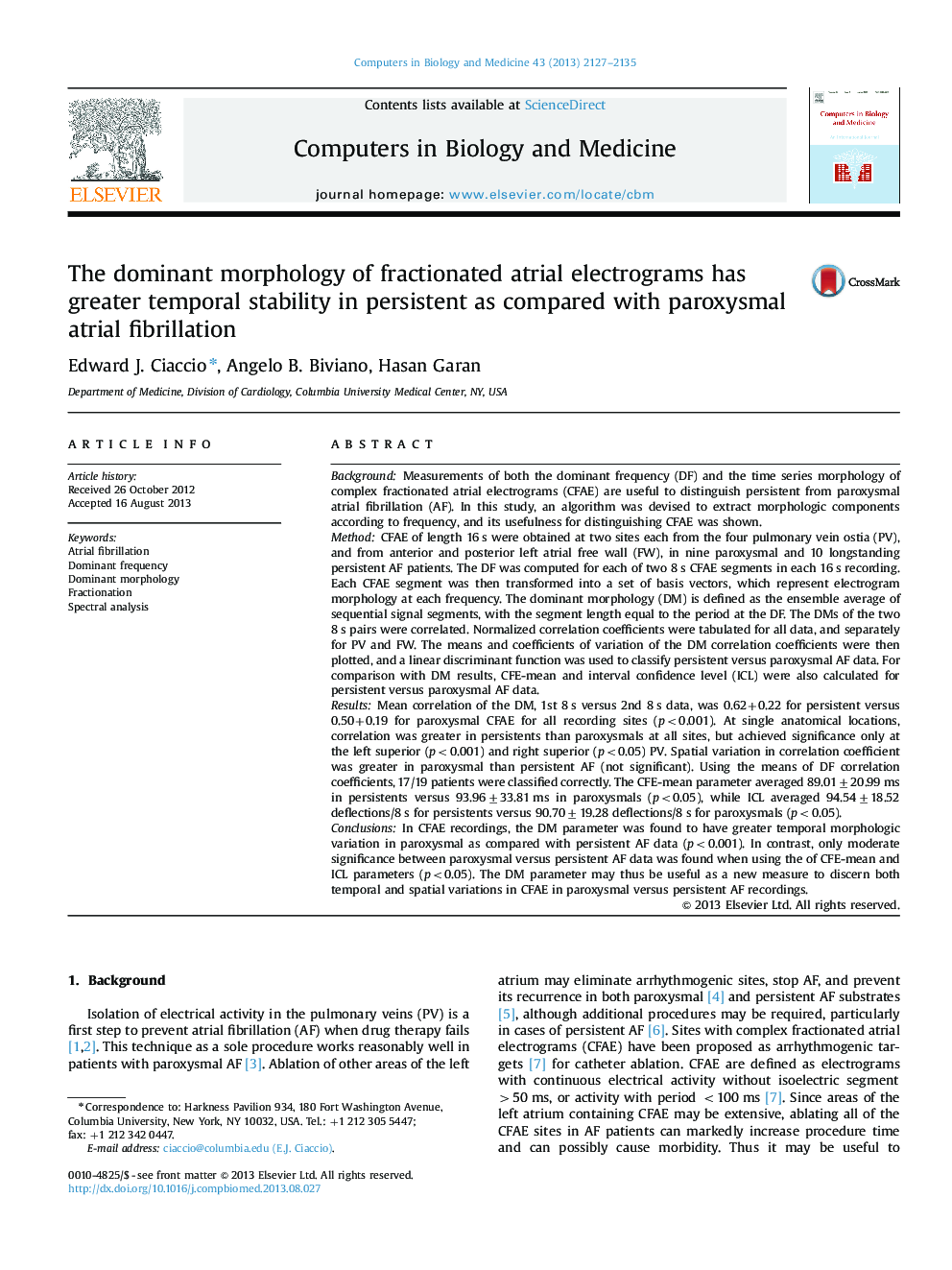| Article ID | Journal | Published Year | Pages | File Type |
|---|---|---|---|---|
| 505066 | Computers in Biology and Medicine | 2013 | 9 Pages |
BackgroundMeasurements of both the dominant frequency (DF) and the time series morphology of complex fractionated atrial electrograms (CFAE) are useful to distinguish persistent from paroxysmal atrial fibrillation (AF). In this study, an algorithm was devised to extract morphologic components according to frequency, and its usefulness for distinguishing CFAE was shown.MethodCFAE of length 16 s were obtained at two sites each from the four pulmonary vein ostia (PV), and from anterior and posterior left atrial free wall (FW), in nine paroxysmal and 10 longstanding persistent AF patients. The DF was computed for each of two 8 s CFAE segments in each 16 s recording. Each CFAE segment was then transformed into a set of basis vectors, which represent electrogram morphology at each frequency. The dominant morphology (DM) is defined as the ensemble average of sequential signal segments, with the segment length equal to the period at the DF. The DMs of the two 8 s pairs were correlated. Normalized correlation coefficients were tabulated for all data, and separately for PV and FW. The means and coefficients of variation of the DM correlation coefficients were then plotted, and a linear discriminant function was used to classify persistent versus paroxysmal AF data. For comparison with DM results, CFE-mean and interval confidence level (ICL) were also calculated for persistent versus paroxysmal AF data.ResultsMean correlation of the DM, 1st 8 s versus 2nd 8 s data, was 0.62+0.22 for persistent versus 0.50+0.19 for paroxysmal CFAE for all recording sites (p<0.001). At single anatomical locations, correlation was greater in persistents than paroxysmals at all sites, but achieved significance only at the left superior (p<0.001) and right superior (p<0.05) PV. Spatial variation in correlation coefficient was greater in paroxysmal than persistent AF (not significant). Using the means of DF correlation coefficients, 17/19 patients were classified correctly. The CFE-mean parameter averaged 89.01±20.99 ms in persistents versus 93.96±33.81 ms in paroxysmals (p<0.05), while ICL averaged 94.54±18.52 deflections/8 s for persistents versus 90.70±19.28 deflections/8 s for paroxysmals (p<0.05).ConclusionsIn CFAE recordings, the DM parameter was found to have greater temporal morphologic variation in paroxysmal as compared with persistent AF data (p<0.001). In contrast, only moderate significance between paroxysmal versus persistent AF data was found when using the of CFE-mean and ICL parameters (p<0.05). The DM parameter may thus be useful as a new measure to discern both temporal and spatial variations in CFAE in paroxysmal versus persistent AF recordings.
